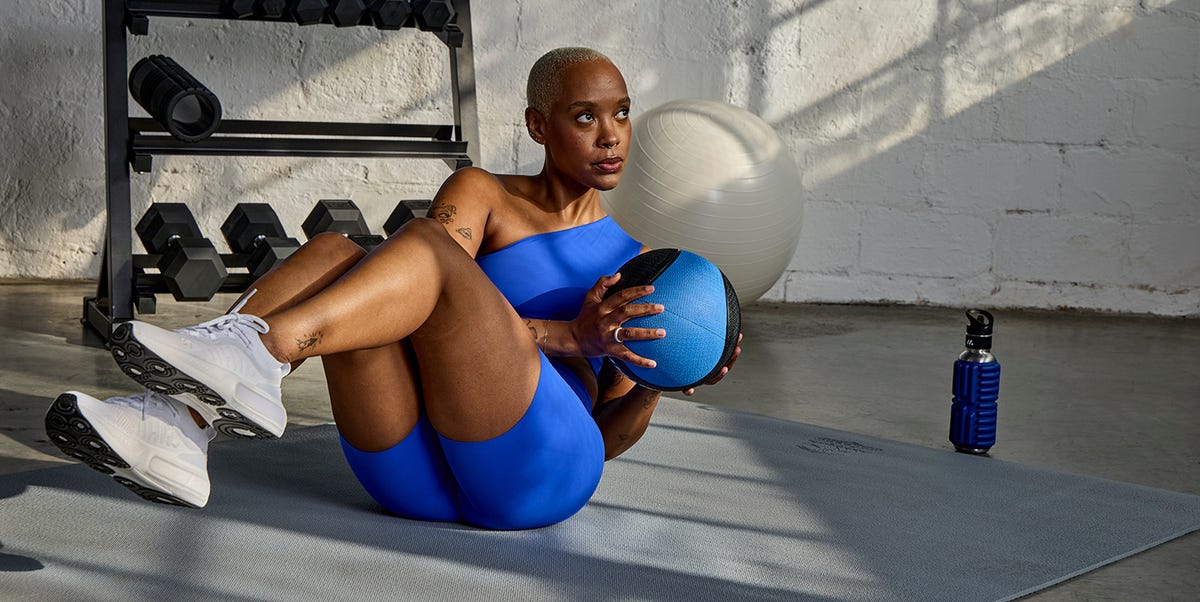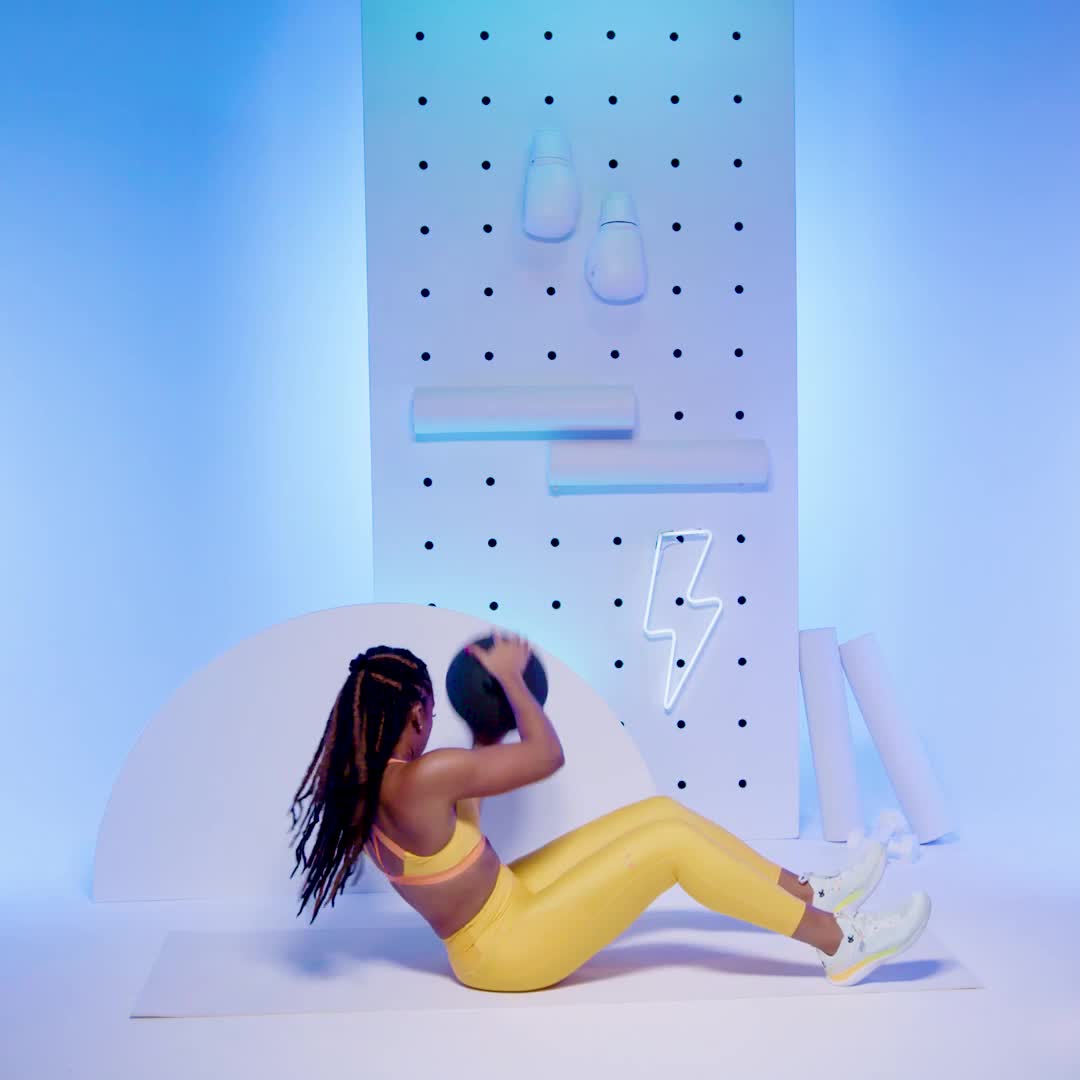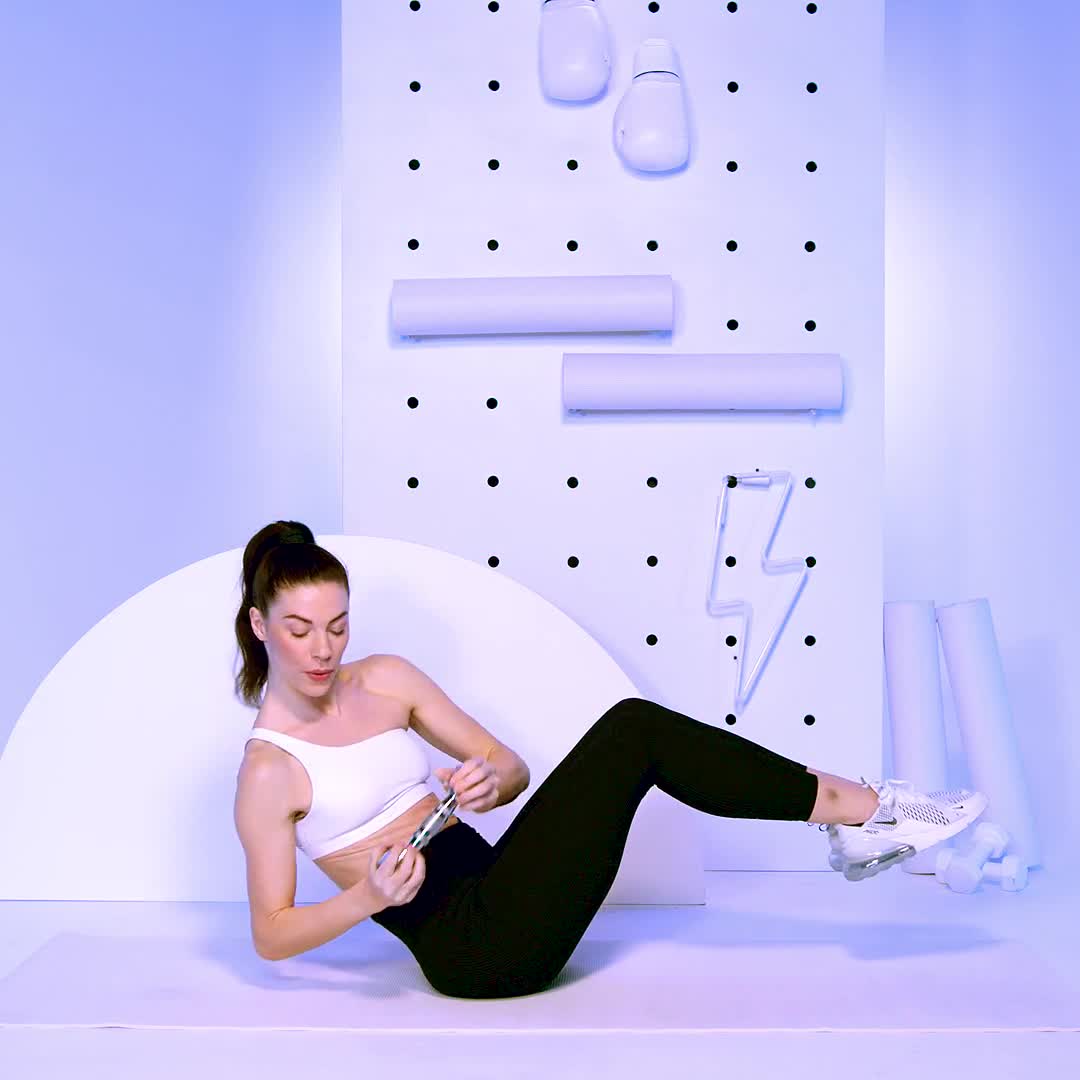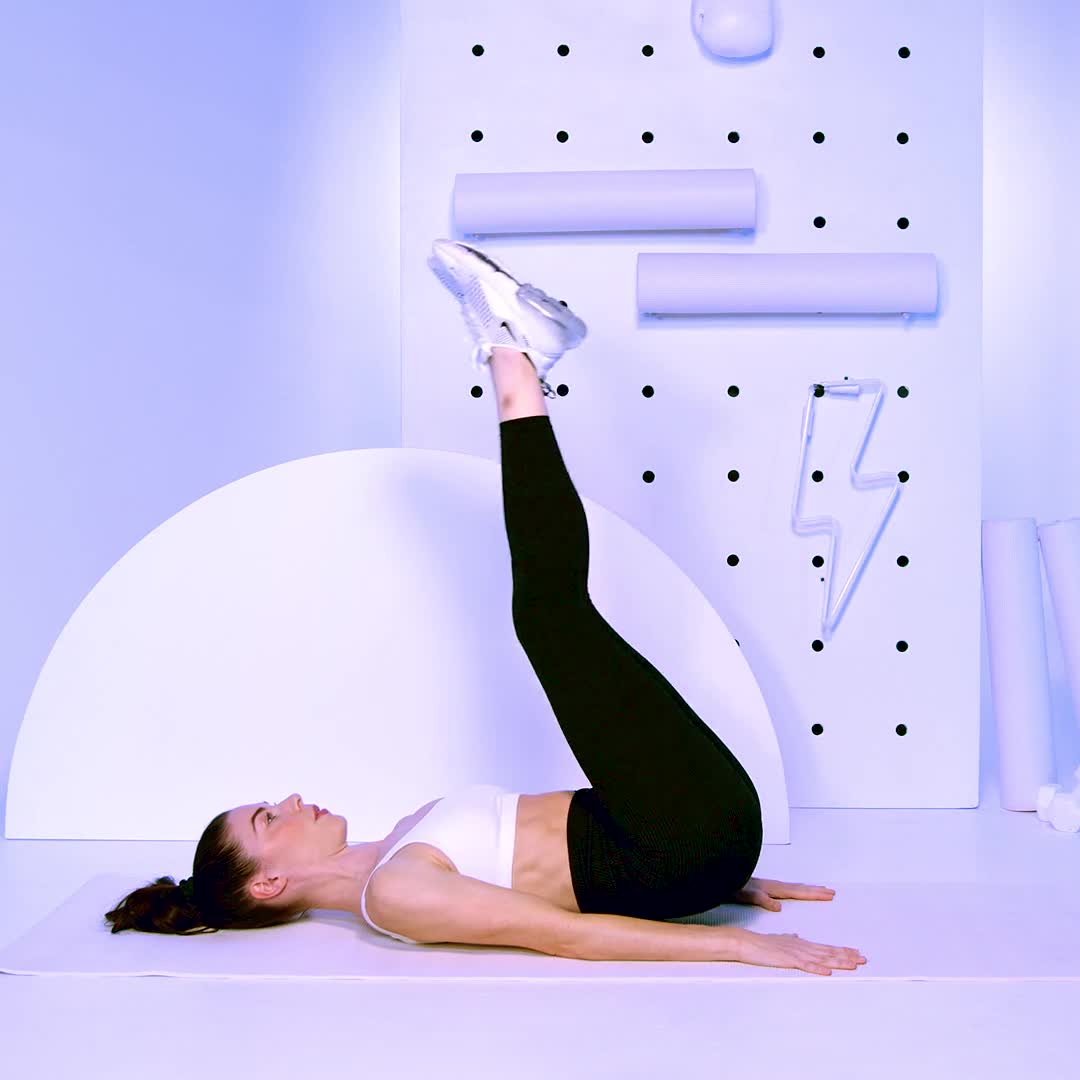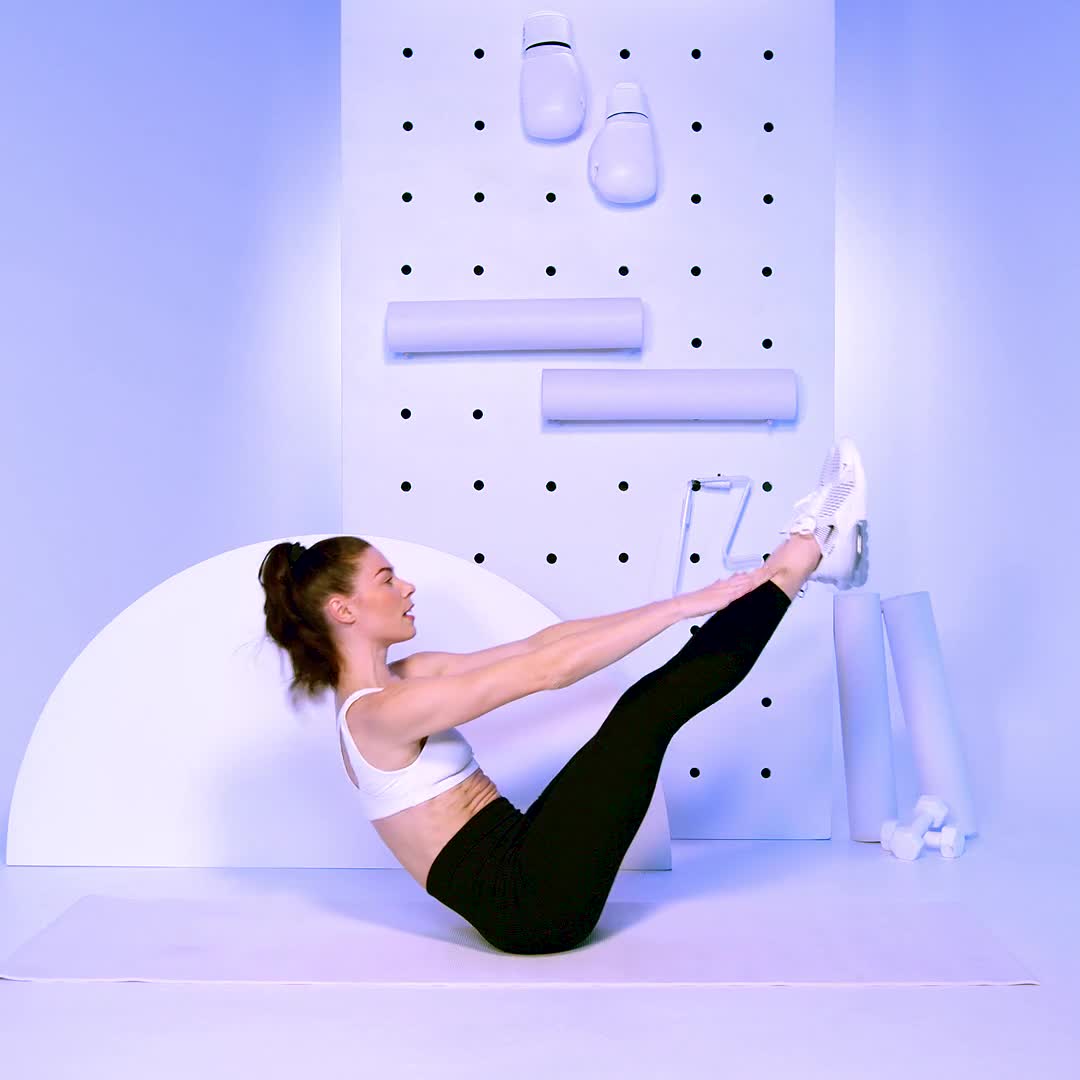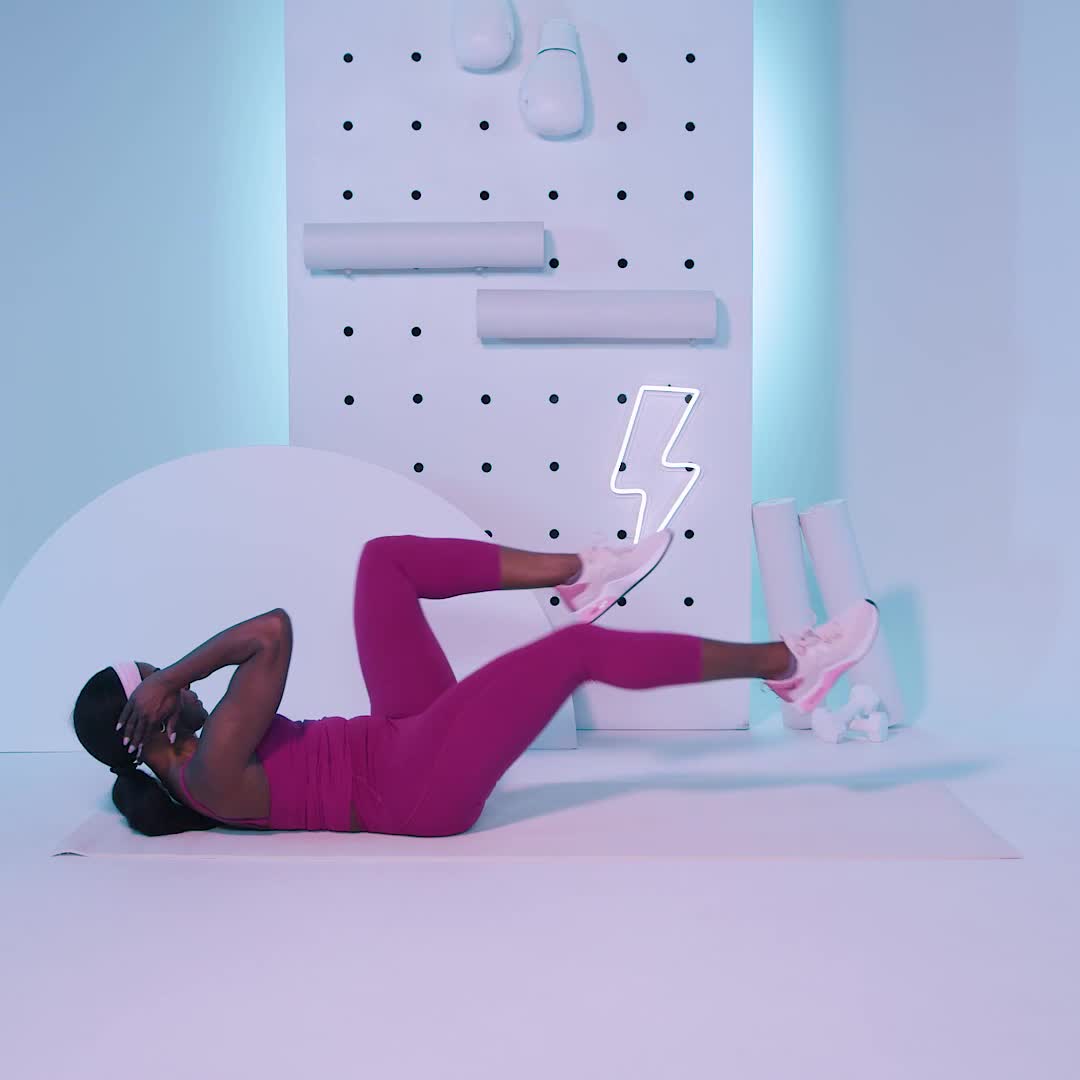When’s the last time you did Russian twists? If it’s been a while, allow us to reintroduce you to this killer core move because it’s *actually* worth doing.
Russian twists work more than just your six-pack (a.k.a. the rectus abdominis). They target the core from every angle. As you rotate your core from left to right, you also work your obliques and deep core muscles, say Lo Lundstrom, CPT, and Ann Flesher, CPT, who make up the Minny Hustlers fitness duo.
But, they have more to offer beyond just strengthening your trunk. “It’s a total core exercise that also works your balance, builds stability in your spine, and trims your mid-section all at once,” says Peter Donohoe, CPT, a core strength teacher at the Boston Ballet.
Convinced to crank some Russian twists out? They’re a little more advanced than other core movements, so you’ll want to do them right. Luckily, we’ve got just the refresher you need. Read on for everything you need to know about Russian twists, including their key benefits, a few variations to the traditional exercise, and how to scale back or amp up the challenge.
Meet the experts: Lo Lundstrom and Ann Flesher are certified personal trainers that make up the Minny Hustlers, a fitness duo out of Minneapolis. Amanda Hoffman, ACE-CPT, is a strength and nutrition coach who aims to help women over 30 get strong and confident, all while building sustainable healthy habits. Peter Donohoe is a NASM-certified personal trainer, core strength teacher at the Boston Ballet, and functional performance specialist for Hydrow. Amanda Hudock, CPT, is a personal trainer and registered yoga teacher who focuses on kettlebell strength training.
How To Do Traditional Russian Twists
How to:
- Sit on floor with hands clasped in front of chest and lean upper body back until abs are engaged. (Optional challenge: Hover legs off floor with knees slightly bent, so that legs and torso are forming a V-like shape.)
- Keep lower body still while rotating upper body to right side until right elbow is just off mat, with gaze following hands.
- Immediately rotate torso to left side so that left elbow is hovering just off mat, gaze following hands.
- Return to center. That’s 1 rep.
Pro tip: It’s important to move slowly, Hudock says, rotating through your obliques, upper back, and shoulders while stabilizing and protecting your lower back from strain.
Benefits Of Russian Twists
There’s a lot of reasons to do Russian twists beyond the fact that they’re in your training plan.
- They strengthen and challenge your core. Russian twists are a great core move, says Hudock. Simply holding yourself up in the starting position for the Russian twist takes a lot of core strength, she says. (For that reason, beginners actually may want to modify the move or master others first—more on that in a sec.)
- They provide a bonus leg workout (and more!). Yup, they’re not just for your obliques. Hudock says this move can work your legs and hips, too.
- They can help you add good variety to your exercise regimen. To understand why, first review the three planes of motion: frontal, sagittal, and transverse. “Frontal is side-to-side [movement], sagittal is forwards and backwards, and transverse is rotation,” Hudock explains. There are lots of exercises that require forward and backward movement (like crunches), she says. Russian twists, on the other hand, require you to move in the less common transverse plane.
- They complement planks. This comes back to that rotation you’re doing with Russian twists. Plank variations can be good anti-rotation movements, or exercises that require you to prevent yourself from rotating, Hudock says. “Anti-rotation can help us prevent injuries because we are teaching ourselves how to ‘brace’ and create stable trunks,” she explains. On the other hand, “the benefit of doing rotational movements [like Russian twists] can be increased power,” she says. You’ll want to do both types of movements within a well-rounded core regimen.
How To Add Russian Twists To Your Workout
Most people should shoot to include this move in their routine two to three times a week, but if your workout of choice relies on rotational strength (i.e., golf and kickboxing), it might be a good idea to bump that up to four times a week. However often you do them, aim for two to three sets of 10 to 12 reps each time.
The Russian twist can be incorporated into any abs circuit, but Donohoe likes pairing it with an upper body exercise like a chest press, single-arm dumbbell row, or bent-over row.
Russian Twist Variations
Whether you want more or less of a challenge, below are a few ways to mix up the standard Russian twist.
One note of caution: Don’t use speed as a way to progress the move. “Keep it slow, keep it controlled,” Hoffman says. In fact, you can even pause in the center—rather than continually twisting from one side to the other—to make the movement more difficult, she says. You also always have the option to increase your reps and/or sets as an extra challenge.
Slam Ball Russian Twist
Why it rocks: This version ups the intensity with added weight and engages the entire core.
How to:
- Sit on ground with knees bent, heels on floor, and upper body leaning back at a 45-degree angle to ground.
- Hold slam ball at chest with elbows bent.
- Keeping arms slightly bent, twist torso to left and slam ball on ground next to left hip. Hold for one to two seconds.
- Twist torso through center to right and slam ball on ground near right hip. That’s 1 rep. Continue alternating sides.
Dumbbell Russian Twist
Pro tip: The shape and grip of a dumbbell can make this move more challenging, so make sure to focus on precision and control during the twist.
How to:
- Sit on ground with knees bent and feet flat on floor.
- Lean back slightly and lift feet off ground a few inches, balancing on butt.
- Hold a weight at chest/waist and rotate torso to one side, tapping weight on ground next to hip before twisting to other side. That’s 1 rep.
Russian Twist Alternatives
Here are some exercises you can do in place of, or in addition to, the Russian twist and its variations. These options may be more gentle on your lower back or simply feel better for your body.
Reverse Crunch
Why it rocks: The Minny Hustlers recommend this move because not only does it dig deep into the lower abdominals, but it also minimizes hip flexor involvement when done correctly.
How to:
- Start lying on back with arms by sides and feet lifted off ground, legs extended, and toes pointed.
- Push down into arms and pull knees into chest until hips lift off mat.
- Slowly return to start. That’s 1 rep.
V-Ups
Why it rocks: This total core challenger engages every inch of your abdominals and helps improve overall balance and stability.
How to:
- Start lying on back with legs extended and arms by sides, both on mat.
- In one movement, lift upper body, arms, and legs, coming to balance on tailbone, forming a “V” shape with body.
- Lower back down. That’s 1 rep.
Bicycle Crunch
Why it rocks: This movement is a Minny Hustler favorite because it allows for targeted oblique engagement to work each side of your core evenly and effectively.
How to:
- Lie flat on floor with lower back pressed into mat.
- Then, interlace fingers to create a cradle and place behind head. Elbows should be out wide and out of peripheral vision.
- Float legs up to a tabletop position, with ankles in line with knees.
- Engage abdominals and lift head, so shoulder blades are hovering off ground.
- Straighten right leg long while turning upper body left. Bring right elbow towards left knee. Twist at ribs and lead with shoulder rather than elbow.
- Switch and repeat on other side. That’s 1 rep.
Are Russian twists good for beginners?
The short answer: Not necessarily. Remember how holding yourself in that starting position requires a lot of core strength? That’s the biggest reason why. If you aren’t quite there yet, Hudock recommends mastering stabilizing exercises like planks or dead bugs first.
And when you are ready to try out the Russian twist, start with a modified, bodyweight-only version of the exercise. That means keeping your heels on the ground, and doing a low number of reps, says Hudock. You can even start by holding yourself in that starting position, and when you feel ready, add in that controlled rotation.
How To Avoid Injury
Stress on the low back is the number one thing to look for and avoid with this move, according to Hudock. You can protect your back by making sure you’re using proper form. Make sure that you aren’t speeding through a bunch of reps or throwing a huge amount of weight from side to side, or you can lose the integrity of the movement, says Hoffman. Rather, prioritize the quality of your reps in order to prevent injury and still get stronger.
And it’s important to note that Russian twists aren’t for everyone. Pregnant and postpartum women, for instance, should avoid them, Hudock says. “There are a lot of amazing core strengthening exercises for women who just have given birth and are trying to rehab from that,” she says. “And I would not say this is one of them.”
Erin Warwood is a San Francisco-based writer, runner, and sparkling water enthusiast. She holds a B.B.A. from the University of Notre Dame and an M.S. in journalism from Northwestern University. In her free time, you can find her watching Survivor, trying new Peloton workouts, and reading Emily Giffin novels. Her ultimate goal: become a morning person.
Olivia Luppino is an editorial assistant at Women’s Health. She spends most of her time interviewing expert sources about the latest fitness trends, nutrition tips, and practical advice for living a healthier life. Olivia previously wrote for New York Magazine’s The Cut, PS (formerly POPSUGAR), and Salon, where she also did on-camera interviews with celebrity guests. She’s currently training for her first half marathon, inspired by her many colleagues at WH who have run one.
Read the full article here


